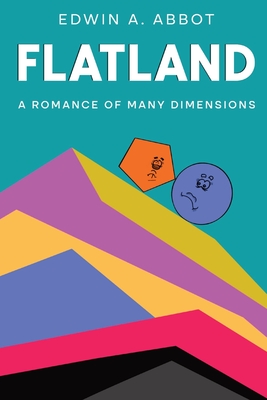Section 2: Of the Climate and Houses in Flatland
bySection 2 introduces the geographical orientation and architectural norms of Flatland, where the inhabitants navigate using a unique sense of direction. Unlike in Spaceland, there are no visible celestial bodies, so determining North cannot rely on stars or sunlight. Instead, nature itself supplies a solution through a subtle but constant attraction toward the South. In milder regions, this pull is barely noticeable, yet it’s sufficient for most people to find their bearings. Rain also always falls from the North, giving residents a secondary cue during travel. Urban areas are laid out with buildings aligned to face this natural orientation, as side-walls run North and South to deflect the rain effectively. Even in rural regions, the position of tree trunks offers guidance. While the absence of typical navigation tools may seem limiting, Flatlanders adapt with a well-structured, natural method of orientation that suits their two-dimensional environment.
However, these methods are not always reliable, especially in sparsely populated or featureless landscapes. In temperate zones where the southern pull is faint and where trees or buildings are absent, travelers may become disoriented. The narrator describes times when he has had to stop and wait for the next rainfall just to regain a sense of direction. The effort of walking northward, although manageable for healthy males, proves burdensome for the elderly and particularly for Women, whose physical limitations are more greatly affected by this gravitational resistance. As a result, social etiquette requires that men yield the North side of the pathway to women, a gesture of consideration deeply ingrained in polite society. Yet this is not always easy to manage spontaneously, especially in ambiguous settings. Navigating in Flatland involves not only natural sense and environmental clues but also an awareness of social obligations and physical differences.
The design of houses in Flatland complements this geography, crafted for both function and safety. All homes are polygonal in shape, constructed to balance symmetry with protection. Most buildings adhere to legal requirements regarding angles, especially in populated areas where sharp corners could pose danger to passersby. As noted in earlier laws, pentagons are the lowest permissible structural form for public safety. Unlike homes in Spaceland, Flatland houses have no windows, as light is not dependent on direction or opening. Illumination is evenly distributed, eliminating the need for windows entirely. This uniform lighting simplifies building design while maintaining privacy and safety. The roof design primarily serves to shield against northern rainfall, reinforcing the practical layout driven by environmental conditions. Even in domestic life, geometry and geography are closely linked in Flatland.
The layout of Flatland homes also reflects social order. Lower-class residents often live in simpler, smaller shapes, while higher-class citizens occupy homes with more complex geometries. This architectural hierarchy visually reinforces the class divisions that define Flatland society. Home design isn’t just functional—it becomes a statement of status and conformity. The use of uniform wall orientation and sharp angular limits also speaks to a culture that prioritizes order and predictability. Deviations from standard form are not just viewed as unsafe—they are considered antisocial or even rebellious. Hence, the very structures people live in serve to discipline and define their place within the greater societal structure.
Interestingly, despite the absence of vertical height, Flatlanders maintain a deep connection to their spatial environment. Though confined to a plane, they have adapted systems of orientation and shelter that ensure survival and cohesion. What might appear limited from a three-dimensional perspective is, in their world, intricate and intentional. From gravitational pull to rain patterns, environmental forces are woven into both etiquette and engineering. It’s a reminder that even in constrained conditions, intelligence and culture can flourish by responding creatively to the rules of nature. In Flatland, the horizontal plane becomes a fully livable and complex world, shaped as much by natural forces as by social design.


